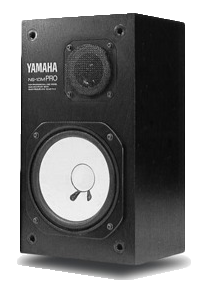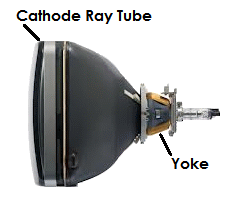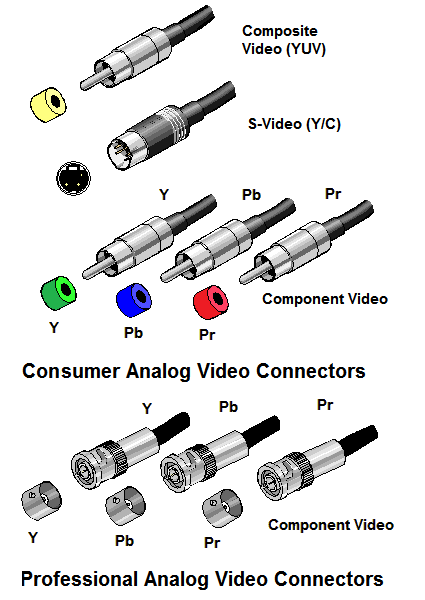——— Y ———

Y – (1) The symbol for admittance, which is the inverse of impedance (Z). (2) The abbreviation for luma in Y/C-video.
Y adapter – see Y connector.
Yamaha Corporation – Yamaha Kabushiki Gaisha. A corporation founded in 1887 by Torakusu Yamaha as Nippon Gakki Company, Ltd., a manufacturer of pianos and organs. Headquartered in Hamamatsu, Shizuoka, Japan, today Yamaha is a manufacturer of musical instruments, electronics, motorcycles, power sports equipment, and software. It is the parent company Steinberg, the developer of Cubase.

Yamaha NS-10 – a hi-fi bookshelf speaker released by Yamaha in 1978, originally intended for home use, but was generally poorly received. However, recording engineers began to use them as secondary speakers to check translation. The NS-10 was discontinued in 2001.
YCbCr – see YUV.
Y/C video – see S-video and YUV.
Y cable – see Y connector.
Y connector – a cable or connector used to split a signal into two or to combine two signals into one. Also called a Y cable, Y adapter, Y cord, Y lead, or wye connector.

Y cord – see Y connector.
Y lead – see Y connector.
Yellow Book – the specification for the CD-ROM format, used to store and playback computer data rather than digital audio on a compact disc. See also Blue Book, Red Book, White Book, Green Book, and Orange Book.
yodel – (1) A singing style in which the voice fluctuates between a normal voice and a falsetto. (2) To sing in a manner in which the voice fluctuates between a normal voice and a falsetto.
yoke – (1) The windings that deflect the beams of a CRT (cathode ray tube). (2) An assembly of two or more magnetic recording heads that enable recording or playing on more than one track at a time.
YouTube – a video-sharing website headquartered in San Bruno, California, originally created in 2005 by three former PayPal employees, Chad Hurley, Steve Chen, and Jawed Karim. The website was purchased in 2005 by Google, and is now operated as a Google subsidiary. YouTube allows users to upload, view, share, and rate video content, such as user-generated and corporate-made videos, TV shows, music videos, shorts, documentaries, audio recordings, and movie trailers.
YPbPr – see YUV.

YUV – the color space used in television and video. Y represents luma, which indicates light intensity. A black and white television decodes only the Y part of the signal. U and V provide the color information and are color difference signals, with U being blue minus luma (B-Y) and V being red minus luma (R-Y). When the sensors in a video camera capture an image, it is in the RGB format. The camera converts the data either into an analog signal, which can be a composite video signal (YUV), an S-video signal (Y/C), or a component video signal (YPbPr) or into a digital component signal (YCbCr). Digital component video can be transmitted over SDI, Firewire, or HDMI cables. Although YUV refers specifically to composite video, it is also used generically to refer to any of the other forms, Y/C, YPbPr, or YCbCr. Pb and Cb are B-Y signals and Pr and Cr are R-Y signals, for analog and digital respectively. Even though it is not compressed, YUV in its various forms uses less bandwidth than RGB, because it is mathematically equivalent to RGB. The conversion formulas for RGB and YUV are as follows:
From RGB to YUV:
Y = 0.299R + 0.587G + 0.114B
U = 0.492 (B-Y) = -0.147R - 0.289G + 0.436B
V = 0.877 (R-Y) = 0.615R - 0.515G - 0.100B
From YUV to RGB:
R = Y + 1.140V
G = Y - 0.395U - 0.581V
B = Y + 2.032U
Note: We believe this is the largest dictionary (glossary) of terms specific to usage within the recording industry that is currently available on the internet, with more than 8,800 entries, nearly 800 illustrations, and dozens of tables. Some of the terms have different or additional meanings in other situations, especially within the electronic, automotive, scientific, and computer industries. Of necessity there are obvious overlaps into other fields such as music, electronics, and computers, but such excursions are limited to information deemed pertinent to the knowledge required to operate and/or participate effectively in the workings of a recording studio. Also included are terms related to sound reinforcement (live performances) including wireless microphone technology because a working knowledge of that terminology is necessary for recording at live performance venues. Because recording studios also record audio for video and motion pictures (films), some terminology from those fields is included. Some scientific terms are included because they help explain studio terminology. For example, electromagnetism explains how microphones, loudspeakers, and guitar pickups work. Knowledge of radio waves and the radio frequency spectrum is needed to explain wireless devices. Any trademarks or trade names mentioned belong to their respective owners. The information contained in this dictionary is believed to be accurate at the time of publication. This information is subject to change without notice. The information was obtained from and cross-checked with a variety of sources that are believed to be reliable. However, Los Senderos Studio, LLC does not guarantee the accuracy or completeness of the information contained herein. Please contact us to report any errors, omissions, discrepancies, or broken links. Los Senderos Studio shall not be responsible for any consequences or damages arising out of the use of this information. Nothing in this glossary should be interpreted as legal advice. For a glossary providing information on legal and business matters for musicians, we suggest you consult Musicians Business Dictionary.
A note on alphabetical order: The terms in this glossary are alphabetical without regard to spaces and punctuation. For example, AM Radio follows amplitude. While this may seem to be at odds with other conventions, it eliminates confusion with words such as pickup, which is sometimes written as pick up or pick-up. In addition, all symbols such as &, -, or / are ignored. The entries on the number page (0-9) are listed in increasing value within each digit. For example, all of the entries beginning with 1 are listed before those starting with 2. For Greek letters (α-ω), the entries are in Greek alphabetical order.


